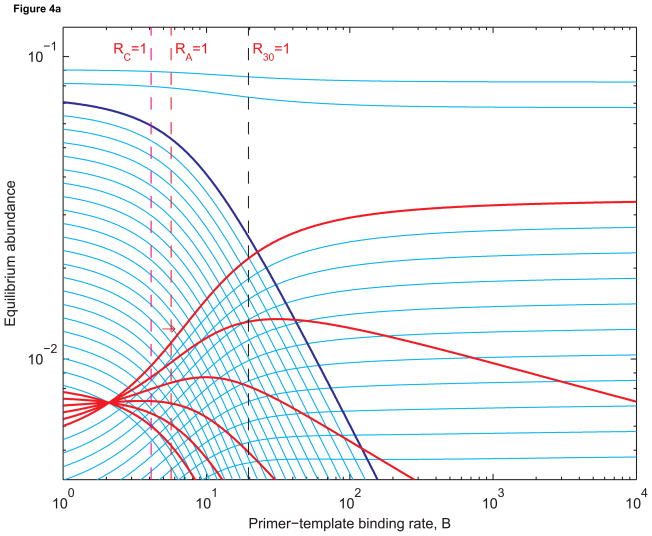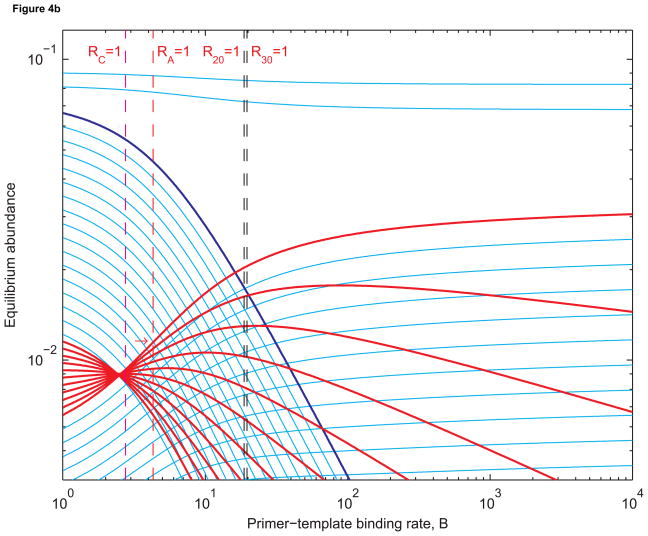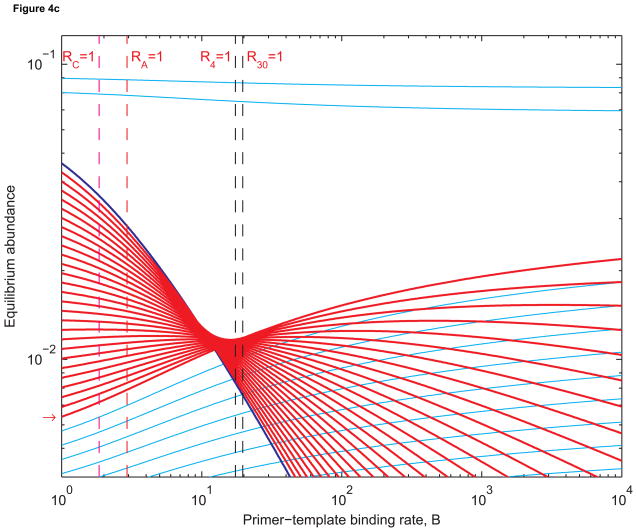Figure 4.
(a) Equilibrium abundances of sequences of lengths 1 to 40 as functions of the primer-template binding rate, B. Sequences of lengths 25 to 30 (red) replicate using length-3 primers (dark blue). The broken red line is where the chain amplification ratio RA equals 1. In this case, the chain amplification ratio is the number of “second-generation” sequences of length 30 obtained from a single “first-generation” sequence of length 25. The broken magenta line is where the cumulative basic reproductive ratio, RC, equals 1. The cumulative basic reproductive ratio is the total number of offspring produced by a single sequence of length 25 over its lifetime, even as it is extended to form longer sequences. The broken black line is where the basic reproductive ratios of sequence of length 25 to 30 are all (approximately) equal to 1. The red arrow indicates where the equilibrium abundance of length-30 templates is most sensitive to changes in B. The rate constants are as in Figure 3. (b) The same abundances when sequences of lengths 20 to 30 replicate. The broken black lines are where the basic reproductive ratios of sequences of length 20 and 30 equal 1. In both Figure 4(a) and 4(b), the equilibrium abundance of length-30 templates is increasing fastest close to where RA = 1. (c) The abundances when sequencs of length 4 to 30 replicate: all sequences longer than the primer, up to the maximum length of 30, are templates. Here RC = 1 is a better approximation of where the abundance of the longest templates is increasing most rapidly.



